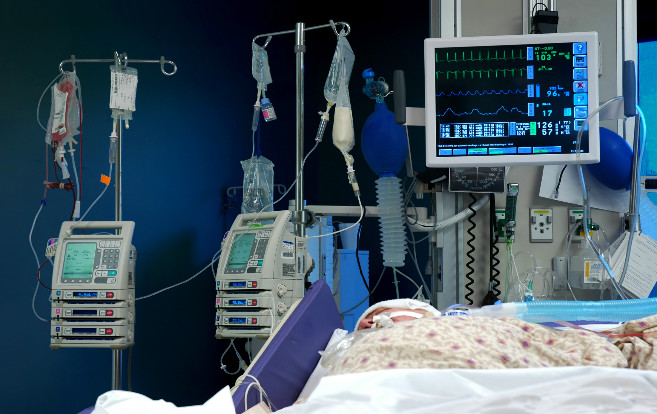One Hospital, 2.5 Million Alarms: Study Highlights Need for Alarm Fatigue Solutions

By Jennifer Larson, contributor
Have you ever ignored a beeping alarm? Or even several alarms? If so, you’re not alone. Many health care professionals are so overwhelmed with patient alarms and alerts that they become desensitized to them. They begin to ignore some of them--intentionally or unintentionally. Unfortunately, a life-threatening event might be missed in the sensory overload.
Indeed, alarm fatigue is a pervasive problem in health care. A study presented earlier this year by the Physician–Patient Alliance for Health & Safety (PPAHS) purports that leaders from 19 out of 20 hospitals report that it’s a top patient safety concern. Alarm fatigue is also on the top 10 list of patient safety concerns compiled by the ECRI Institute.
In response to the problem, The Joint Commission added alarm safety to its National Patient Safety Goals in 2014. This year, Phase I is requiring hospitals to begin establishing alarms as an organization priority and determine which alarms are the most important ones to manage. Phase II will begin in 2016, when hospitals must develop and implement specific plans to address their alarm-related problems, including education of employees about alarm system management.
False alarms?
In a new article published in the online journal PloS One on October 22, Barbara Drew, PhD, RN, and her co-authors describe an observational study of alarms recorded in five intensive care units at University of California, San Francisco (UCSF) Medical Center over a 31-day period. A “complex interplay” of factors played into the surprisingly high number of alarms--more than 2.5 million--including “inappropriate user settings, patient conditions and algorithm deficiencies.”
According to the study’s authors, some false alarms resulted because nurses didn’t change the default settings to tailor them to suit an individual patient’s circumstances.
“Nurses need to assess alarm settings for their individual patients at least once per shift to minimize repetitive and clinically meaningless alarms,” said Drew, who is the David Mortara Distinguished Professor in Physiological Nursing Research and clinical professor of medicine, cardiology, at UCSF.
However, device manufacturers also can play a role in making improvements. They can address the need to alter certain devices to make it easier for nurses to tailor the alarm settings to individual patients--and to focus on the most important needs.
“While it is tempting to blame the user for alarm fatigue, device manufacturers also have a responsibility to make monitors more helpful, interactive and intuitive,” wrote the authors. “Moreover, it would be more efficient and reliable to have monitor devices suggest alarm setting changes rather than to rely on humans, who are distracted by multiple competing priorities, to remember to tailor alarms to their individual patient.”
Other hospitals may want to go the route of UCSF and convert some audible alarms to inaudible alerts (text messages) to reduce the noise associated with alarms.
For example, UCSF has made alarms associated with premature ventricular contractions (PVCs) inaudible because consecutive PVC-related arrhythmia is considered to be nonactionable; according to Drew, published practice guidelines indicate that PVCs don’t need to be treated with antiarrhythmic drugs due to the potential side effects.
“Inaudible alarms are not as noxious as audible alarms,” Drew said. “However, they are not totally innocent in contributing to alarm fatigue because the nurse is supposed to respond to fix the problem that triggers an inaudible alarm.”
However, configuring “nuisance alarms”--alarms triggered for conditions that don’t need to be treated--as inaudible does help by reducing the noise in the patient’s environment. Other research shows that reducing the noise in the patient’s environment contributes to better healing (as well as improved patient satisfaction rates).
Certain alarms, of course, will need to stay audible.
Future research
Drew said she would like to see more information about how often commercially-available electrodes should be changed to prevent false alarms that are the result of electrode failure.
“It is also unknown what impedance measurement would indicate electrode failure and how best to measure impedance continuously,” she said. “There is also insufficient data on the best skin prep regimens that will decrease electrode impedance without causing skin breakdown.”
She added that she would also like to see more research on the effectiveness and safety of adding alarm delays for certain parameters in an effort to reduce alarm fatigue.
Resources:
American Association of Critical-Care Nurses (AACN) – Strategies for Managing Alarm Fatigue
Advance your nursing career with excellent pay in thousands of locations! Apply now to travel!
© 2014. AMN Healthcare, Inc. All Rights Reserved.